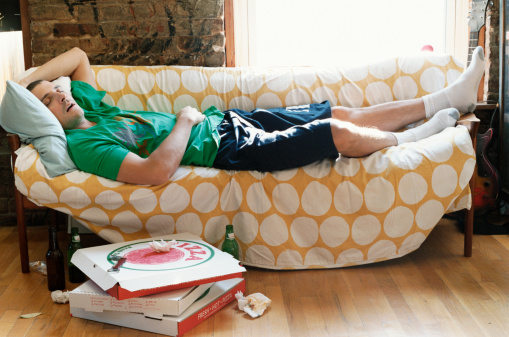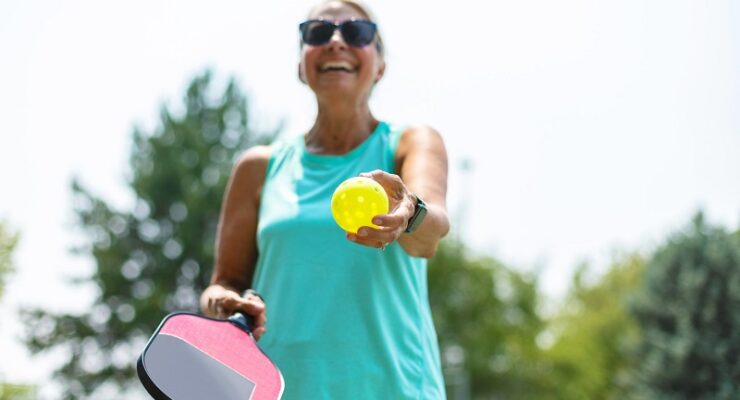5 Genius Health Hacks for Couch Potatoes
Article posted in: Fitness
Are you one of those people who’s thrilled to learn that you can burn anywhere from 19 to 28+ calories every 30 minutes you’re sleeping? If so, you might just be a couch potato. And you’re probably going to be deliriously happy to find out that you can burn roughly 20 to 30 calories for each half hour of TV viewing.
But if you’re worried that your allergy to activity can prevent you from losing weight, there’s good news: Studies have confirmed that it’s diet, not exercise, that fuels the greatest percentage of weight loss. Think of exercise as an important supporting character. It helps burn those calories you’re taking in, helping you lose even more weight. But you don’t need it.
Well, that’s not quite true. You do need to exercise. Weight isn’t your only consideration.
The Centers for Disease Control and Prevention states that regular physical activity is linked to a lower risk of heart disease, type 2 diabetes, some cancers, muscle and bone issues (such as osteoporosis), arthritis, hip fractures and falls, depression and even anxiety.
People who are physically active seven hours a week—and we’re not talking marathon running here—reduce their chances of dying early by 40 percent, compared to those who are active less than a half an hour a week.
But, even if you hate to exercise, you can make exercise a regular part of your day by doing just a few simple things.
Here are five mind-blowing health hacks for couch potatoes:
1. Track–and boost—your daily activities.

There are plenty of things you probably already do that burn more calories than sleeping and watching TV. Did you know that depending on your weight, pushing a shopping cart at the grocery store can burn 310 calories an hour, according to a Harvard Medical School study. That’s about the same number you’d burn playing golf using a cart.
Yard-work has water aerobics beat. You can torch as many calories in the yard weeding for 30 minutes as you burn essentially doing jumping jacks in the pool. The National Institute on Aging lists yard work like raking as physical activity with other aerobic activities such as jogging, swimming, climbing stairs and playing tennis.
Pushing your kids or grandkids on the swings, vacuuming, carrying a full laundry basket up a couple of flights of stairs and even making your bed can help you burn calories, while improving strength and endurance. That’s right—you’ll be exercising without knowing it. A study from the Oregon Health Sciences University found that a series of everyday activities that adds up to 30 minutes a day is just as good as working out at the gym. People who exercised that way had slimmer waists than those who didn’t. So, even if these activities seem small, they add up!
Take note of all of the ways you are moving throughout the day. This will bring your attention to the chores and other little things you are doing each day that can help you get to your goal weight faster. Tracking all forms of activity is a way to hold yourself accountable and find opportunities to raise your daily calorie burn.
For instance, if you already clean your home regularly, but don’t take the time to vacuum, make it happen! You’ll feel great knowing that your home is now cleaner, but you’ll feel even better knowing that you were getting a bit of a workout at the same time. It doesn’t feel like a trip to the gym, but knowing the payoff will increase any motivation to move more during the day.
2. Try the kitchen workout.

The kitchen is a great gym substitute. Instead of bending over to load and unload the dishwasher, do squats. Grab a couple of gallon or half gallon jugs partially filled with liquid and do some bicep curls (bring them straight up from your side almost to your shoulder).
Put your hands on the kitchen counter, walk your legs back, then lean forward into the counter and push yourself back up. You just did a pushup! While you’re still there, rest your hands on the counter and lift yourself up on your tiptoes and go back down. You’re working your calves.
Do some lunges on the kitchen floor (make sure you’re wearing sneakers and that your floors aren’t too slippery). Then get face down on the floor, either with your knees or your toes connecting with the floor, and your upper body weight resting on your forearms and elbows. Keep your abs tight. That’s a plank. Hold it as long as you can. It helps firm and strengthen your core muscles.
3. Have fun.

Remember when you were a kid and you hated when your mom told you it was time to come in? You may not have thought about it then, but playing tag, doing hopscotch, riding your bike and jumping rope were your exercise—and you loved it. Find things you love today and don’t reject any of those childhood games! Maybe you love to dance. Take a class or buy a DVD. Learn folk dancing, swing, salsa or country dancing. Try out some belly dancing or hula classes.
4. Get the family involved.

Worried about taking time away from your kids? Get them involved. The whole family can go for walks and hikes. Kids would love geocaching, an outdoor “treasure hunt” in which you use a GPS tracker to find “caches” at various locations around the world by other “geocachers.” Usually it’s a waterproof container with a logbook and pencil for you to register your find. Go to geocaching.com to find out more about it.
5. Volunteer for a charity walk.

If you have a cause you’re passionate about that has an annual fundraising walk, sign up. Talk about motivation. Give yourself a few months to train for it, whether it’s a 1-mile, 5K (about 3 miles), 10K (about 6 miles) or three-day walk (60 miles). Start slowly, then work your way up to the ultimate number of miles you’ll be walking.








